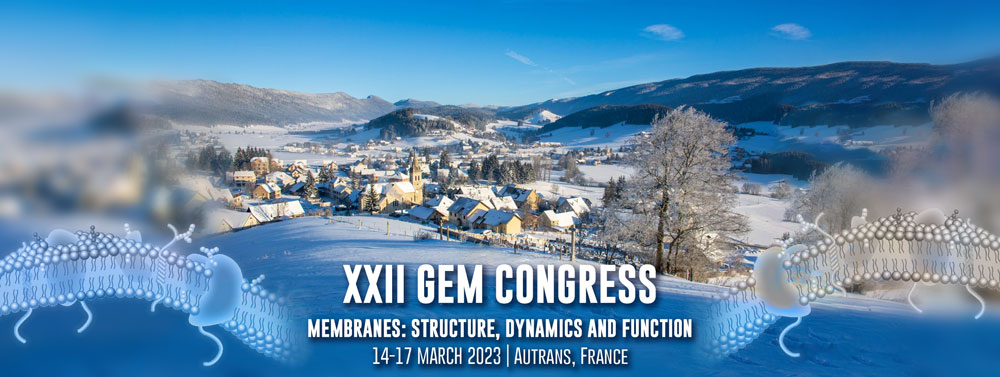Speaker
Description
Membrane bilayers in eukaryotic cells display an asymmetrical transbilayer lipid distribution, i.e. a different lipid concentration in their two leaflets, which is important for fundamental cellular processes like vesicle-mediated trafficking or recruitment of signaling proteins to the membrane. Transbilayer lipid asymmetry is maintained by specific membrane proteins, flippases and floppases, that transport lipids unidirectionally across the membrane bilayer against a concentration gradient by using energy from ATP hydrolysis. Flippases that belong to the family of P4-ATPases catalyze transport of phospholipids from the exoplasmic to the cytoplasmic membrane leaflet. Dysfunction of P4-ATPases may cause severe diseases, as for example mutations in the human flippase ATP8B1 are linked to intrahepatic cholestasis.
We study the yeast lipid flippase Drs2 which is homolog to human ATPB81 and which has been shown to flip phosphatidylserine (PS) in the trans-Golgi network (TGN). Drs2 tightly associates with a Cdc50 subunit, requires phosphatidylinositol-4-phoshate (PI4P) for stimulation of its activity and has long, partially unstructured N- and C-terminal extensions that keep the flippase in an autoinhibited state [1]. Thus, removal or displacement of N- and C-termini is required to release autoinhibition, which could only be achieved so far using limited proteolysis or insertion of protease cleavage site at specific locations in the C-terminus.
It was shown previously that the N-terminus of Drs2 interacts with the small GTPase Arl1, an Arf-like protein involved in trafficking processes at the TGN. In addition, the C-terminus of Drs2 binds Gea2 which is an Arf guanine-nucleotide-exchange factor (Arf-GEF) and activator of small GTPases. Gea2 also directly interacts with Arl1 [2]. However, the exact interaction mechanisms of Arl1 and Gea2 with Drs2-Ccd50 and their involvement in lipid transport remain to be elucidated. Given that Arl1 and Gea2 deletion in yeast impairs PS transport in isolated TGN membranes [2], we hypothesize that their binding to Drs2 contributes to autoinhibition relief in vivo.
To further study the regulatory mechanism of lipid transport we purified various components of the flippase machinery. By reconstitution of purified Drs2-Cdc50 in proteoliposomes, we can directly show lipid transport using a fluorescence-based assay with NBD-phospholipids. To resolve whether Arl1 and Gea2 along with PI4P may release autoinhibition and fully activate full-length Drs2 for lipid transport, we next aim to reconstitute full-length Drs2-Cdc50 together with purified Arl1 and Gea2 and test the influence of Arl1 and Gea2 binding on flippase activity. This approach would allow to further dissect involvement of Arl1 and Gea2 in Drs2 activation as well as the molecular mechanisms of lipid transport and regulation.
[1] H. Azouaoui, et al., High phosphatidylinositol 4-phosphate (PI4P)-dependent ATPase activity for the Drs2p-Cdc50p flippase after removal of its N- and C-terminal extensions. J. Biol. Chem. 292, 7954–7970 (2017).
[2] P.-C. Tsai, J.-W. Hsu, Y.-W. Liu, K.-Y. Chen, F.-J. S. Lee, Arl1p regulates spatial membrane organization at the trans-Golgi network through interaction with Arf-GEF Gea2p and flippase Drs2p. Proc. Natl. Acad. Sci. U. S. A. 110, E668-677 (2013).
| Session | Interaction lipids/polymers/membrane proteins |
|---|

